Preparation for Campaign Launch
Complete the following steps before starting a campaign.
Step 1. Selecting and Creating Template
Go to the Messages → Messages section and select a template from one of the three tabs:
- Basic — templates of the most common types: plain text, promo, triggers, greetings, etc. The last template on this tab is for using your own HTML code.
- Gallery — templates for various industries and information purposes.
- Saved — your templates.
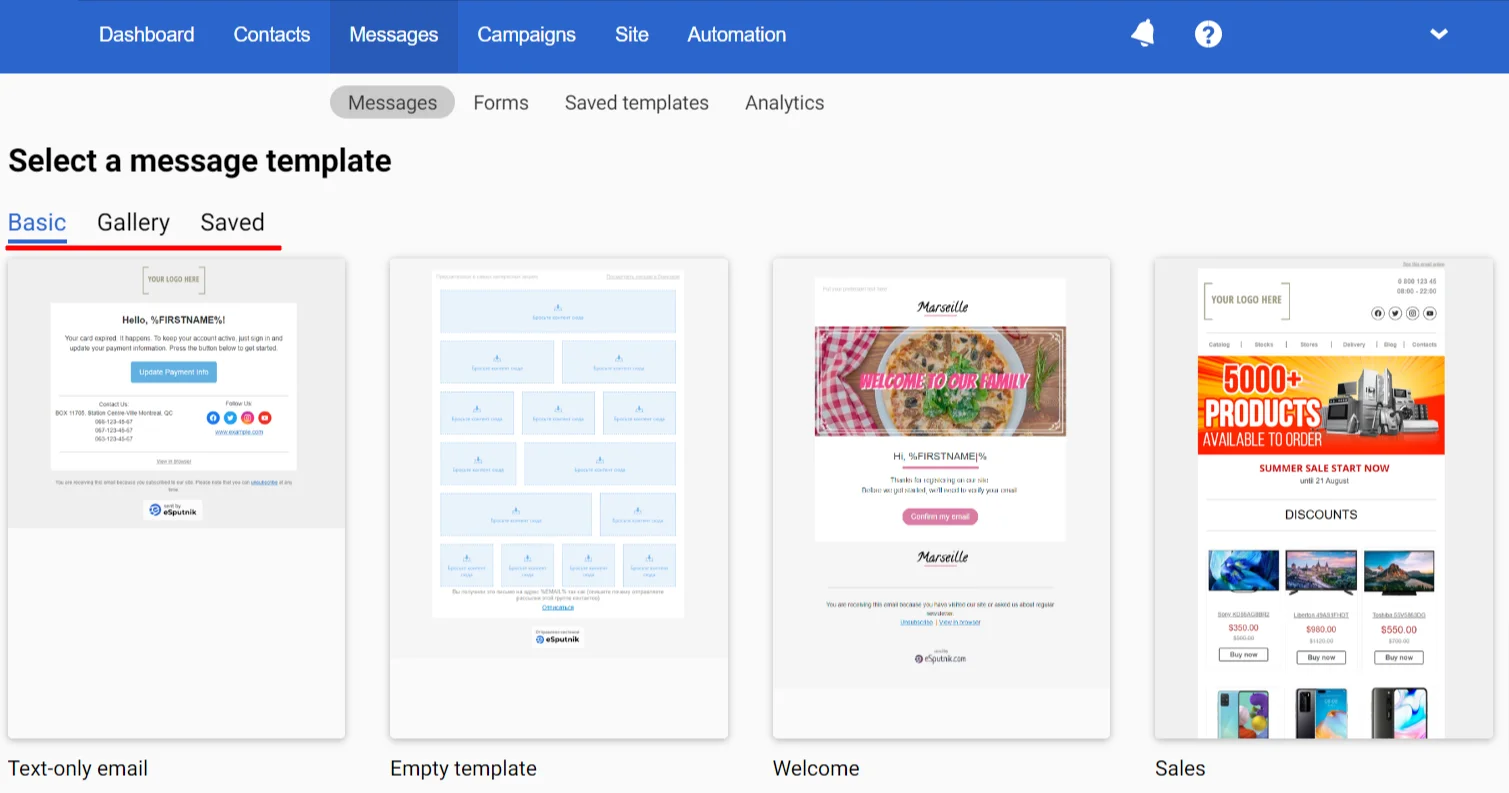
Step 2. Providing General Information
Click on the message name to enter its general information.
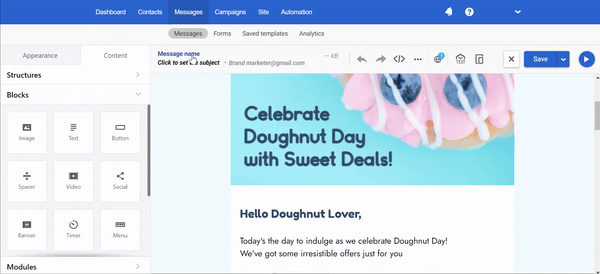
Message Name
The name for internal identification of messages and reports.

Recipients can only see this name in the email's UTM tag if the default settings are used (utm_campaign=message name).
To set UTM tags manually, read the instructions at the link.
If you do not specify the name of the email when saving, the subject of the campaign will be automatically inserted into this field.
Subject
The email subject is the line of text that appears in a recipient's inbox, summarizing the content or purpose of the email. It's typically placed at the top of the email, just before the body of the message, and serves as a brief, attention-grabbing headline. The subject line is crucial because it influences whether the recipient decides to open the email. A clear, concise, and relevant subject can significantly increase the likelihood of the email being read.

To see our subject wording tips, click the check mark/exclamation mark next to the subject.
To test the effectiveness of different subject options, add them using the appropriate button.
NoteYou can use AI to optimize your email's subject line, preheader, and body. Click the Improve with AI button and choose the best option.
Hidden Preheader
A hidden preheader is displayed in the mailbox after the subject.
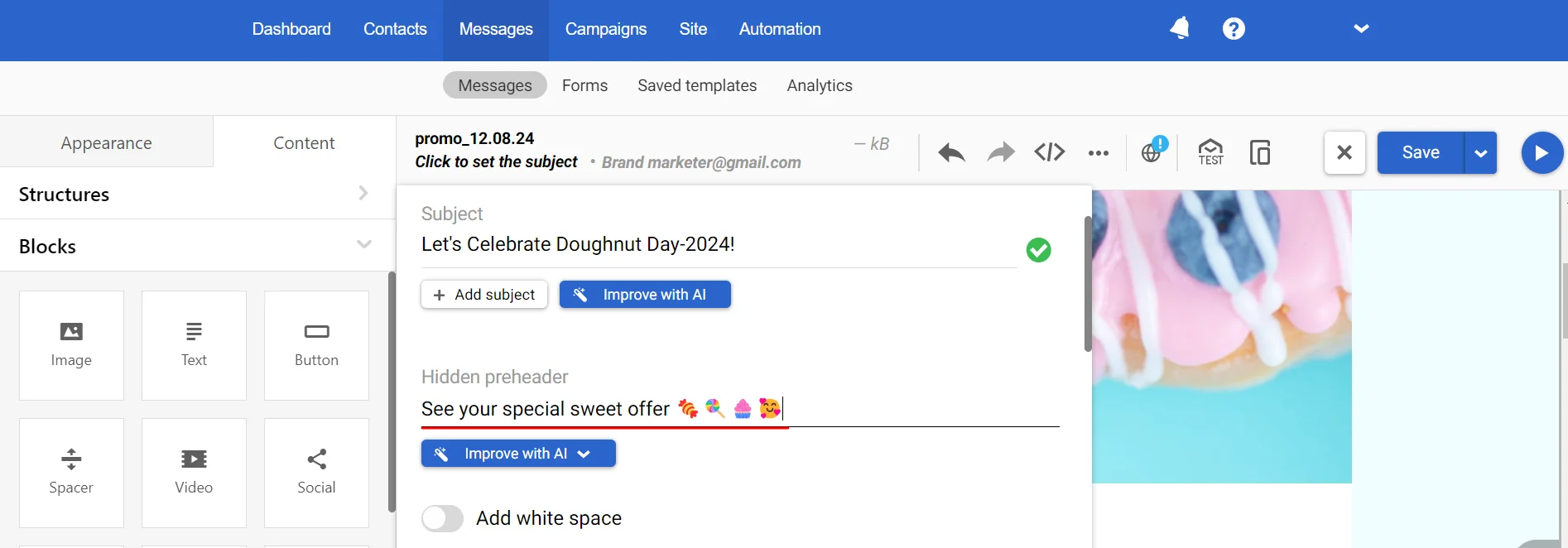
Sender
The sender's name is created by default based on the account user's data.
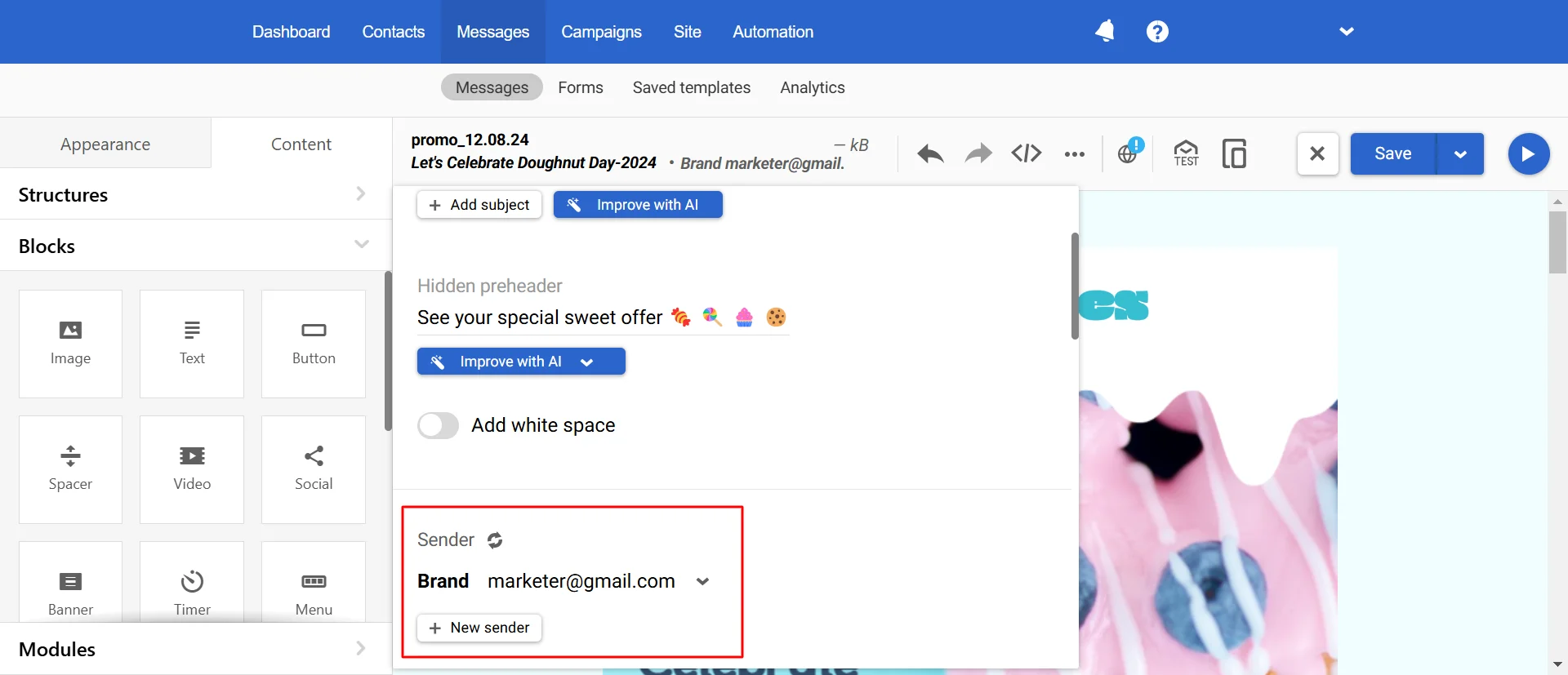
To use a branded sender name, you need to add it according to the instructions.
NoteMailing from public addresses is impossible, so you must add a sender before sending.
Brand Logo for Mailbox
The BIMI (Brand Indicators for Message Identification) authentication standard allows displaying the brand logo alongside messages in recipients' inboxes.

Reply to
By default, all replies are accepted to the sender's address. If addresses like noreply@ are used as the sender, Gmail may mark the emails as less reliable because recipients cannot quickly contact the sender. This may affect the delivery of emails. In this case, we recommend adding an alternative address to senders and then selecting it in this field.
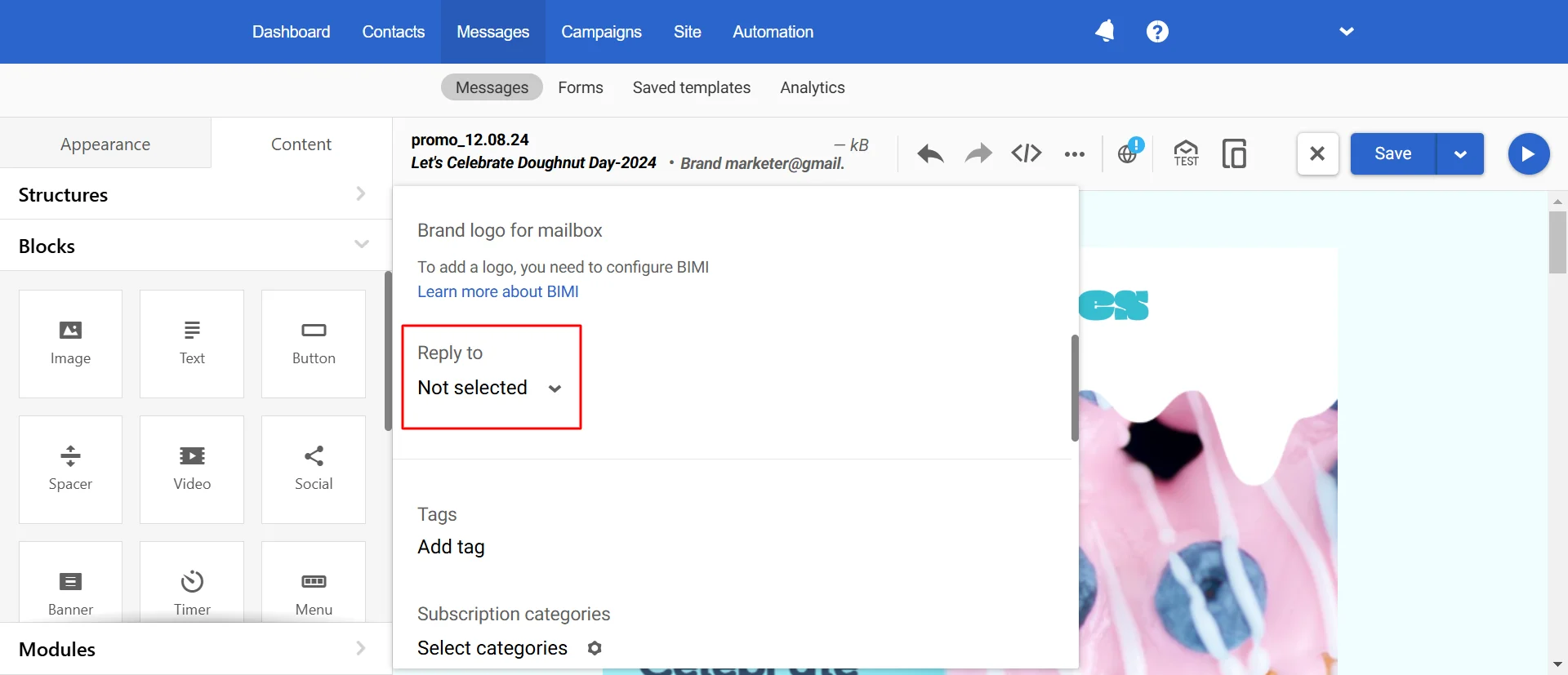
Tags
Tags allow you to group messages, segments, reports, and workflows with common marketing goals. In addition, tags are used
- When building a campaign frequency strategy,
- In the One from many workflow block, which automates A/B testing, diversifies communication, and determines the most effective version of the message.
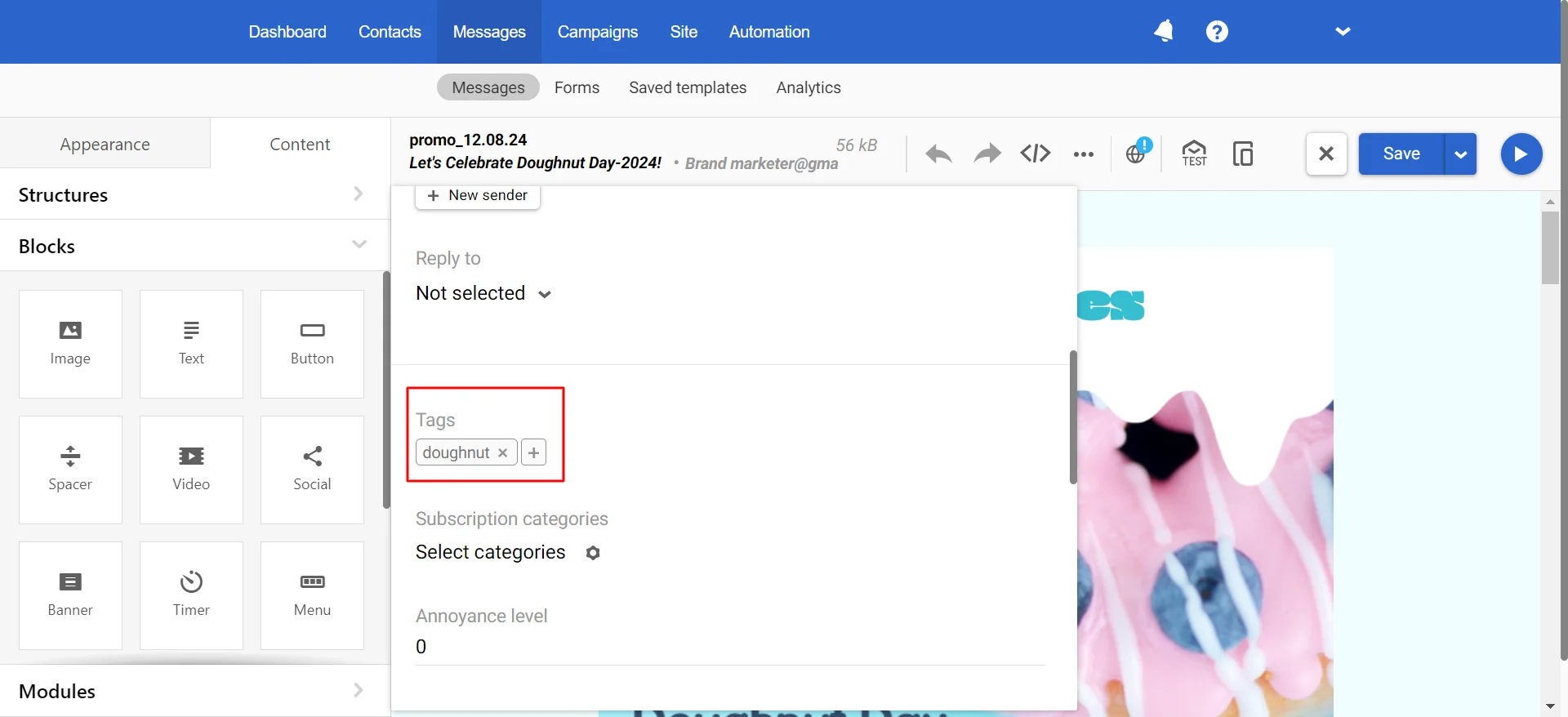
Subscription Categories
Set up subscription categories to segment promo campaigns based on your audience's interests.
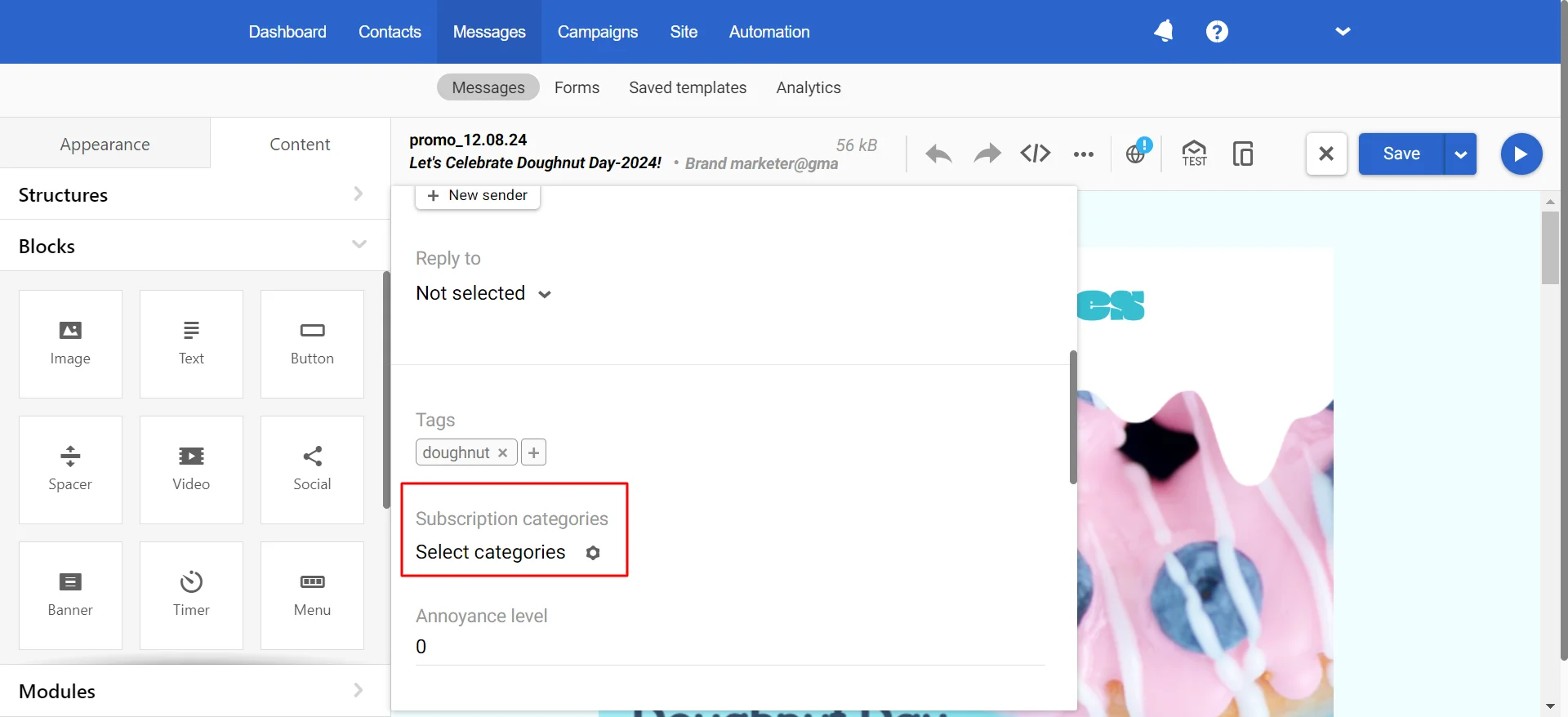
Annoyance Level
Use this option to protect your subscribers from excessive marketing communications.
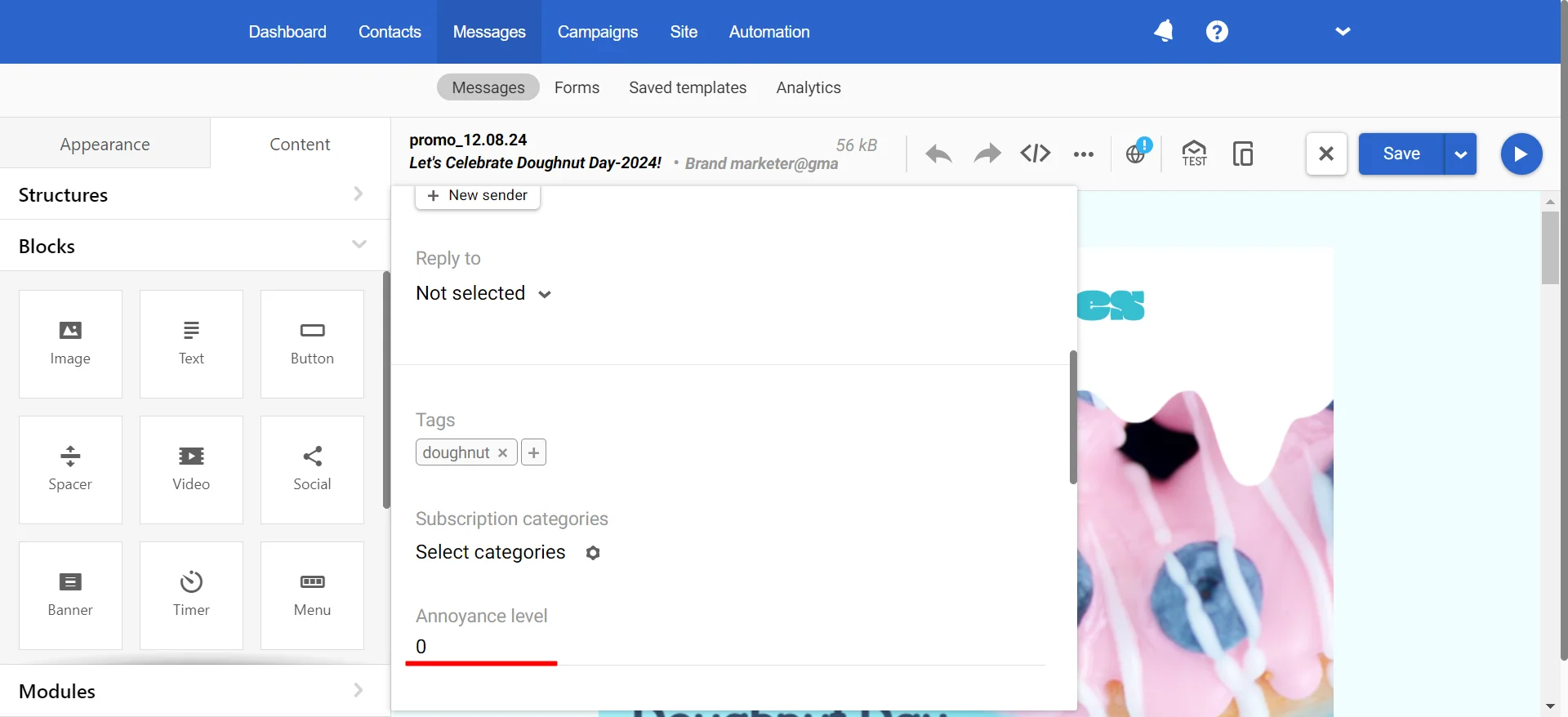
More on setting annoyance level >
Gmail Promotions Annotations
You can configure the message annotation displayed in the Gmail mobile mail client for emails in the Promotions folder.
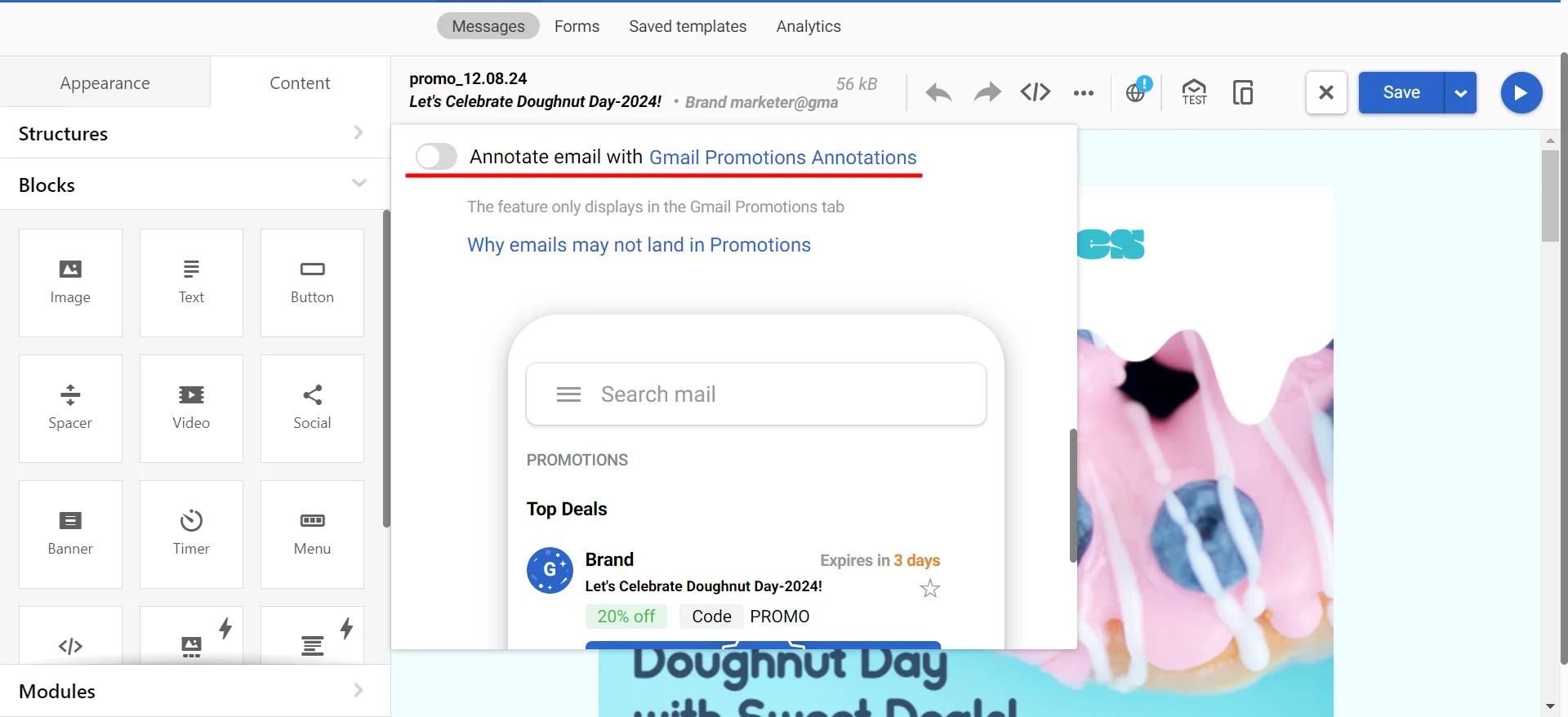
Step 3. Adding General Settings
This section describes non-required but important options for advanced email settings.
Multilanguage
This functionality allows you to create an unlimited number of language options directly in the message. This significantly saves time when creating a campaign for a multilingual audience due to the absence of redundant copies of the message, multiple language segments and checks in the workflow, etc.

Personalization and Dynamic Variables
To personalize the content of a message in Reteno, you can use built-in merge tags or do it through code (read more).
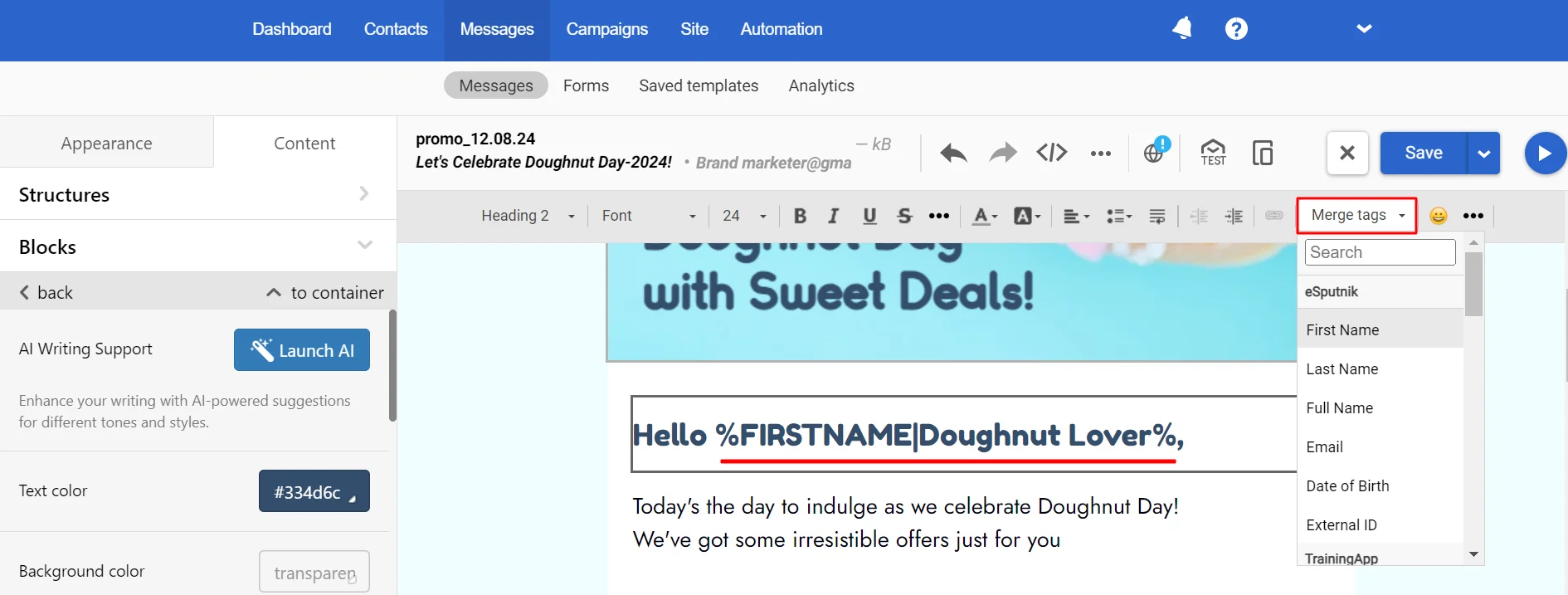
You can also use personalized promocodes in messages — the settings options are described in the link.
Unsubscribe
An unsubscribe link is mandatory for every email sent from Reteno, as it is a requirement of mailers and legislation in most countries. You also need to add text explaining why the user received this email.
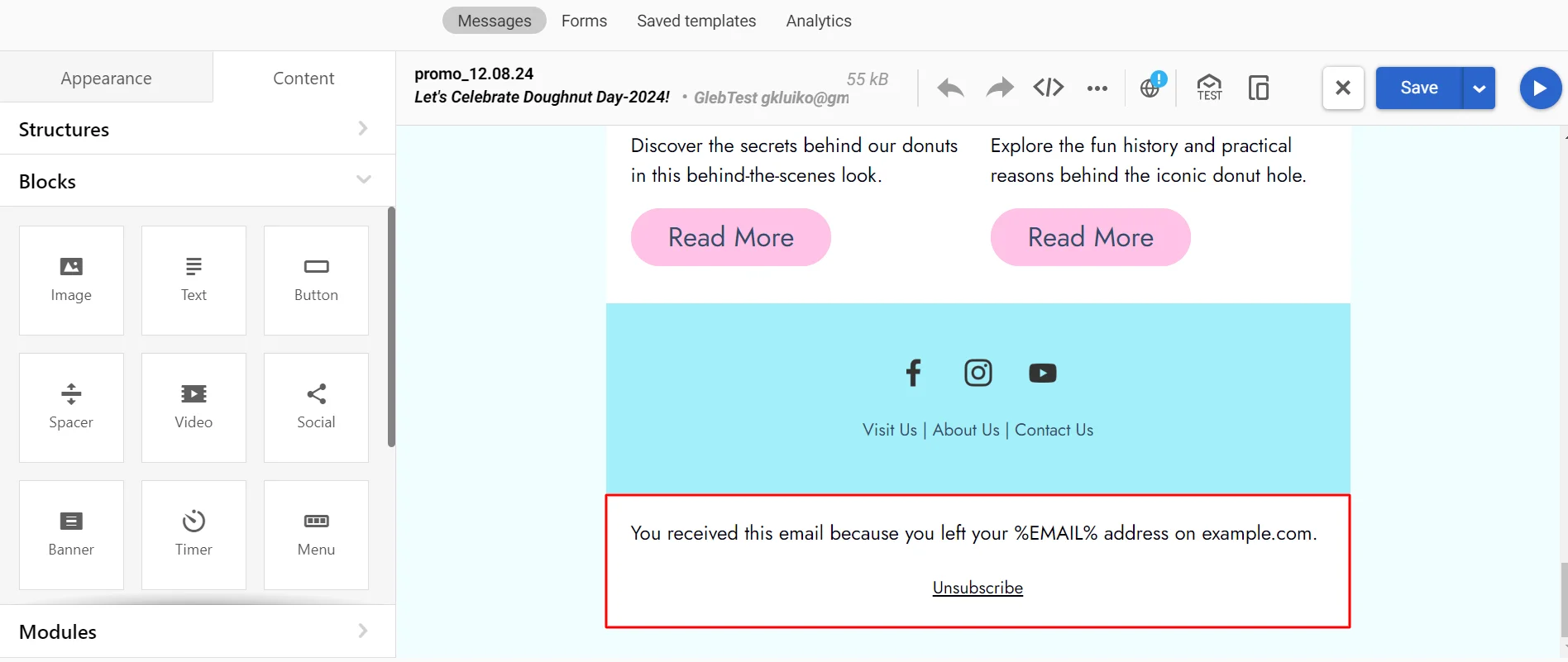
You can change this structure's text, design, and placement in the email. Only the default unsubscribe link should remain unchanged.
Email addresses of users who unsubscribe are automatically no longer available for email newsletters.
Step 4. Content Editing
Our drag-and-drop editor makes it easy to create professional emails without the need to work with code. Just drag the blocks and edit the content; you'll have an email ready in a few minutes. The Email Editor section provides more detailed information.
We also recommend paying attention to the special features of the editor:
- AMP blocks for using interactive content,
- Product blocks for displaying personalized recommendations.
Step 5. Preview and Test
While creating a message, you can easily preview how it will look on desktop and mobile devices. To do this, click the View message icon on the top panel of the editor.

If you use personalization in the email, you can check in the preview window (1) how a specific contact will see the message or how it will display data from a JSON request (2).
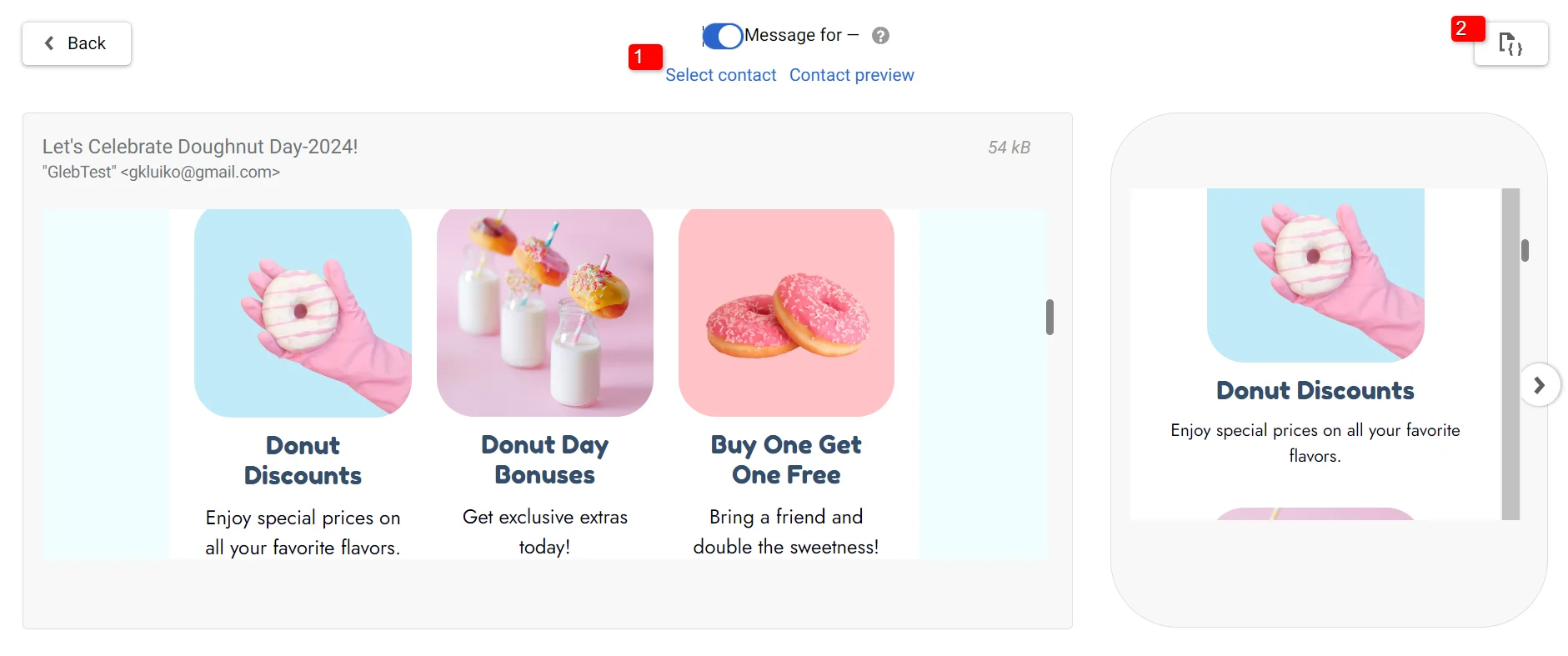
You can test a message in two ways:
- In the message editor — click the TESTbutton on the top panel.
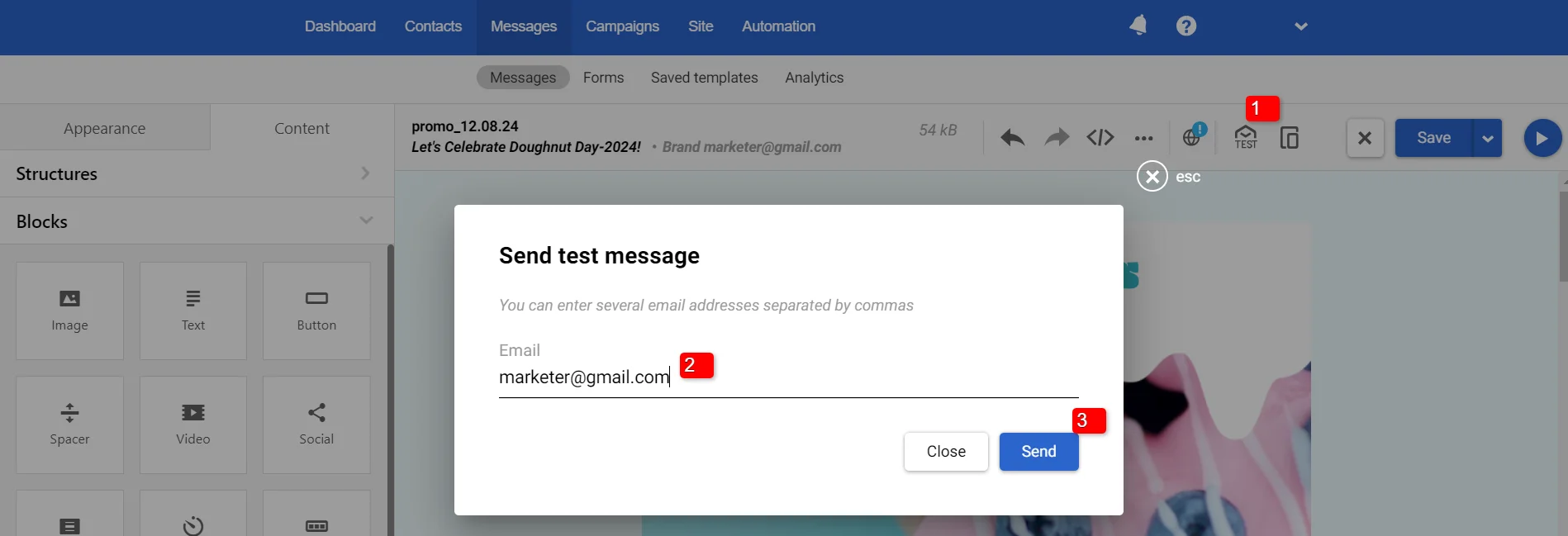
- From the message list — open the menu with three dots to the right of the message name and select Send test message.
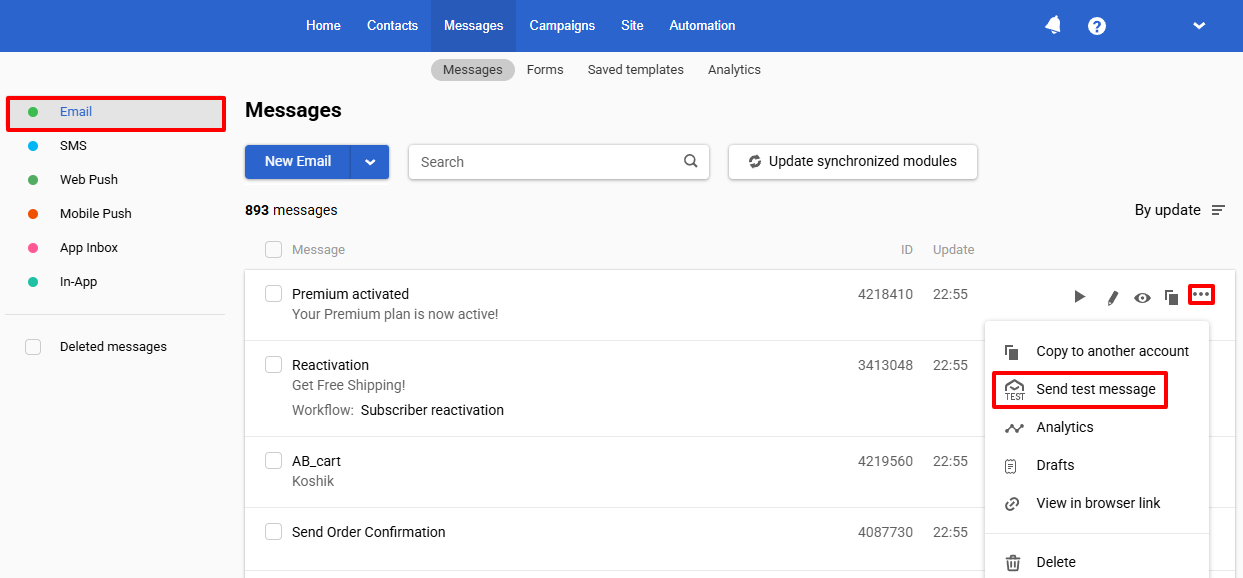
Then follow these steps:
- Specify the email address to which you want to send the test email (2).
- Click the Send button (3).

We also recommend testing your email in special services like Litmus or Email on Acid. This is especially important if you use non-standard designs or transfer HTML code to the editor.
Step 6. Saving
When you click the Save button (1), the Email will be created or updated in the Messages → Messages section. Select Save as template (2) if you want to use the created message as a template for further campaigns (Saved tab).

Now, you can proceed with the launch of the campaign.
Updated about 2 months ago
